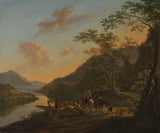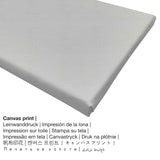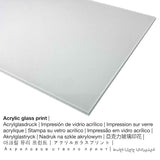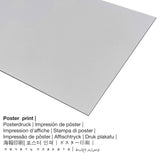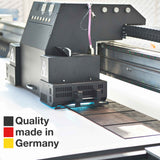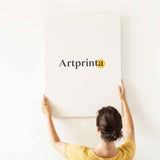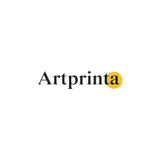Jan Abụọ, 1652 - Mpaghara Ịtali nwere Ferry - mbipụta nka mara mma
Ụtụ gụnyere. Mbupu gbakọrọ na ndenye ọpụpụ.
Description of the painting created by the Baroque painter Jan abụọ
a nka ochie sere Italian Landscape with Ferry was created by the artist Jan Both. Today, the piece of art is included in the Rijksmuseum's digital collection. Site n'ikike nke: Rijksmuseum (ikikere: ngalaba ọha).Kridi n'obi nke artpiece bụ ndị a: . E wezụga nke a, nghazi nke dijitalụ mmeputakwa bụ odida obodo na nwere akụkụ ruru nke 1.2: 1, meaning that the length is 20% longer than the width. The painter Jan Both was an artist, whose art style was primarily Baroque. The Dutch artist lived for 34 afọ and was born in the year 1618 in Utrecht, Utrecht province, Netherlands and passed away in 1652.
Nye iwu ihe ngwaahịa ị họọrọ
Maka ngwaahịa ọ bụla anyị na-enye ụdị nha na ihe dị iche iche. Ị nwere ike ịhọrọ n'ime nhọrọ nhazi ngwaahịa ndị a:
- Glass acrylic e biri ebi (nwere ezigbo mkpuchi iko): A glossy acrylic glass print, which is often referred to as a print on plexiglass, changes the artwork into beautiful wall décor. The work of art is being printed with the help of state-of-the-art UV print machines.
- Mbipụta ọla (aluminium dibbond): An Aluminium Dibond print is a print material with an outstanding effect of depth. The non-reflective surface creates a contemporary look. A direct Aluminium Dibond Print is the best start to fine art replicas produced on aluminum. For the Direct Print On Aluminum Dibond, we print your selected work of art onto the surface of the white-primed aluminum material. The colors are luminous, the fine details of the print are crisp, and you can perceive a matte appearance of the fine art print.
- Akwụkwọ mmado ebipụtara (akwa akwa akwa): A poster print is a UV printed sheet of canvas with a slightly rough texture on the surface, that reminds the actual masterpiece. Please keep in mind, that depending on the absolute size of the canvas poster print we add a white margin of approximately 2-6cm round about the work of art, which facilitates the framing with a custom frame.
- Kwaaji: The canvas print is a printed canvas stretched on a wooden stretcher. The great advantage of canvas prints is that they are relatively low in weight, meaning that it is easy and straightforward to hang the Canvas print without additional wall-mounts. Hence, canvas prints are suited for any type of wall in your house.
Disclaimer: We try everythig possible in order to describe our products as closely as possible and to demonstrate them visually. Still, the colors of the printed materials and the print result can diverge to a certain extent from the presentation on your screen. Depending on the settings of your screen and the nature of the surface, colors may not be printed as realisitcally as the digital version on this website. In view of the fact that all the art prints are processed and printed manually, there might also be slight deviations in the size and exact position of the motif.
Ozi ihe ahaziri ahazi
| Bipụta ngwaahịa: | ọrụ mgbidi |
| Usoro mmeputakwa: | dijitalụ mmeputakwa |
| Produzọ mmepụta: | Mbipụta UV / dijitalụ |
| Nlụpụta: | Germany |
| Ụdị ngwaahịa: | a na-achọ |
| Eji ngwaahịa a chọrọ: | mgbidi mgbidi, ime ụlọ |
| Nhazi nka nka: | usoro odida obodo |
| Oke akụkụ onyonyo: | ogologo: obosara 1.2:1 |
| Nsonaazụ nke oke ihe onyonyo a: | ogologo bụ 20% ogologo karịa obosara |
| Akụrụngwa ị nwere ike ịhọrọ: | ígwè obibi akwụkwọ (aluminium dibond), akwụkwọ mmado (akwụkwọ kwaaji), mbipụta enyo acrylic (nke nwere ezigbo mkpuchi iko), mbipụta akwụkwọ. |
| Mbipụta kanvas (akwa akwa n'elu etiti ihe ndọtị) ụdị nha dị iche iche: | 60x50cm - 24x20", 120x100cm - 47x39" |
| Mbipụta iko acrylic (nwere ezigbo mkpuchi iko) dị iche iche: | 60x50cm - 24x20", 120x100cm - 47x39" |
| Mpempe akwụkwọ mmado (akwụkwọ kwaaji) nha dị iche iche: | 60x50cm - 24x20", 120x100cm - 47x39" |
| Nhọrọ mbipụta aluminom: | 60x50cm - 24x20", 120x100cm - 47x39" |
| Nhazi mmeputa nka nka: | oyiri nka na-enweghị isi |
Iberibe nkọwa nka
| Aha nka: | "Italian Landscape with Ferry" |
| Nhazi nka: | sere |
| Okwu nche anwụ: | nka ochie |
| oge: | 17th narị afọ |
| Ekepụtara: | 1652 |
| Ogologo afọ nka nka: | ihe karịrị afọ 360 |
| Egosiputara na: | Rijksmuseum |
| Ebe ngosi nka: | Amsterdam, Netherlands |
| Weebụsaịtị ihe ngosi nka: | www.rijksmuseum.nl |
| Akwụkwọ ikike nka: | ngalaba ọha |
| Site n'aka: | Rijksmuseum |
Ozi ndabere izugbe gbasara onye na-ese ihe
| Ihe nkiri: | Jan abụọ |
| Aha ndị ọzọ: | Mon.ur Bot, Jan Both of Italy, Both d'Italie, Both il giovine, Jean Both d'Italie, Jan Bott, Monsu Bott, Bots, Joan Both, Botti fiamenga, Johann Both, Monsù Bott' fiammingho, Both Jan. Holl., Giovanni Both detto d'Italia, Jan Bodth, Both Jan, Hoth, Gio: Bot, Both, Both J. D., בות יאן, Johan Both, Jean Both d'Italie, jan dircksz both, Jann Both, Botti, Jean Both, Von dem italiänischen Both, J. Bout, Jan Bogt, Botta fiamengo, Jan Borth, Monsù Bot, Jean Both dit Both d'Italie, Bott, J. Bott, Botts, Giovanni Both, Joh. Both, I. Boot, John Booth, Both Jan Dirksz, Iean Bott, Bot d'Italie, Borth, Jan Both, Jan Dirksz Both, Monsu Botto, Monsieur Bot primo scuolaro di Claudio Lorenese, J. Both dit Both d'Italie, Monsù Boto, both j., Jn. Both, Booth Jan D., both fiamingo, J. Both d'Italie, Boot d'Italie, Jan Bot, Johann Booth, Both Jan Dircksz, jahn both, Botta, J. Bot, Jean Both dit Both d'Italie, both jan adriaen van, Both i Italie, Both of Italy, bot johannes, de Bott, jan booth, Jean Both ou Both d'Italie, John Both, Both Jean-André, Both Joh., old Bott, J. Both, Both surnommé d'Italie, Botto, Jean Both dit Both d'Italie, Bott of Italy, I. Both, monsu` Bot, Bootz d'Italie, John Both of Italy, Both d'Italie, Bot, Msù Bot, Both of Italy |
| okike nke onye nka: | nwoke |
| Obodo onye nka: | Dutch |
| Ọrụ: | onye na-ese ihe |
| Obodo onye nka: | mba netherland |
| Otu nka: | nna ukwu ochie |
| styles: | Baroque |
| Oge ndu: | 34 afọ |
| A mụrụ: | 1618 |
| Ebe omuma: | Utrecht, mpaghara Utrecht, Netherlands |
| Nwụrụ n'afọ: | 1652 |
| Ebe ọnwụ: | Utrecht, mpaghara Utrecht, Netherlands |
© Nchekwa ikike nwebisiinka | Artprinta.com (Artprinta)
(© - site na Rijksmuseum - Rijksmuseum)
Herders and an elegant couple are about to take a ferryboat. They have no choice, because – as the lady on the grey horse points out – the stone bridge in the distance has collapsed. By including the ferry, Both introduced a narrative element to the landscape. The scene is bathed in a golden evening glow, and the valleys are cloaked in a bluish haze.

